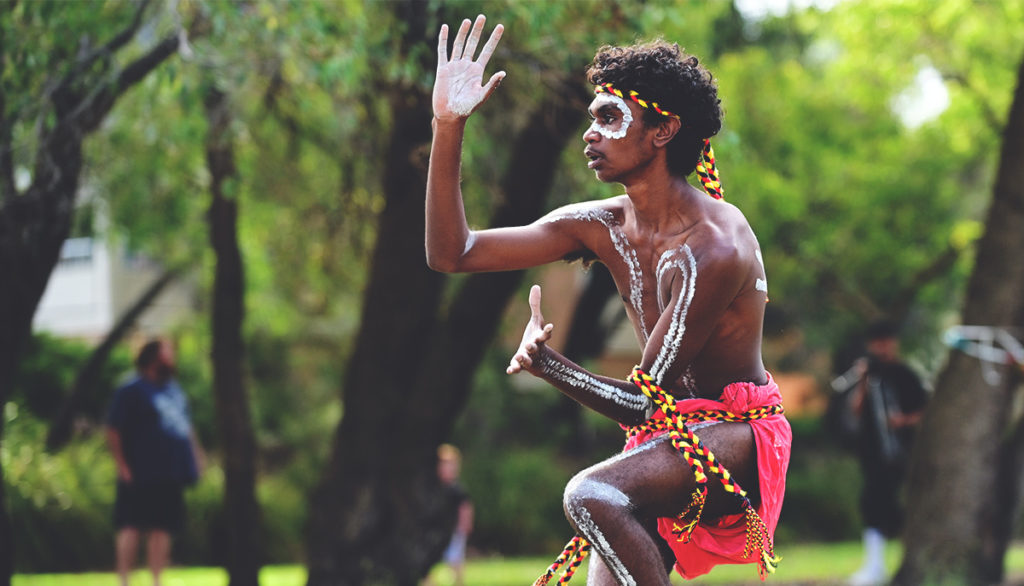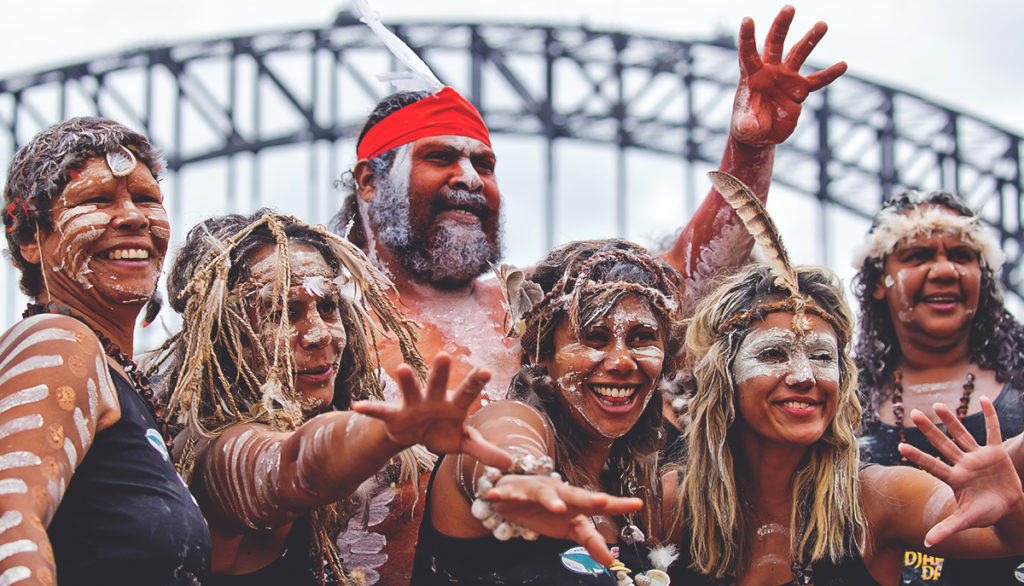After two years of lockdowns, Australia’s music scene is re-emerging bigger and better than ever. From local gigs to large-scale festivals, there is no shortage of incredible music or talented musicians in Australia. So, how and where did it all begin? Let’s take a step back to find out! Here is a brief history of how Australian music has evolved through the decades.
Pre-1800s: Indigenous Australian music
Australia’s Aboriginal people are considered to be the longest-surviving culture in the world, so it is no surprise that their musical instruments also stem back tens of thousands of years. You have probably heard of the didgeridoo, which is a hollowed-out tree limb blown through to create a low-pitch sound. But did you know there are many other Aboriginal musical instruments? There’s the gumleaf (a eucalyptus leaf held up to the lip and blown through), the bull-roarer (a wooden slat on the end of a cord spun around to create a pulsating sound), and clapsticks (two pieces of wood hit together like a percussion instrument).
The 1800s: colonial composition
Music in Australia throughout the 1800s was heavily influenced by British colonisation of the country. Convicts and other European immigrants brought songs from their homeland and adapted them to Australian conditions and their new livelihoods.
Sea shanties introduced by convicts evolved into bush music or bush ballads. Bush music is focused on the harsh living conditions and lives of shearers, drovers and bushrangers. Arguably the most famous bush ballad is Waltzing Matilda, which is still popular today. Written in 1895, Waltzing Matilda is about a swagman (worker) making billy tea in the bush and capturing a sheep to eat.
The 1910s: theatre and art music
The 1910s saw the popularity of variety theatre, which is broadly defined as entertainment featuring a variety of acts such as singing, comic sketches, dancing, animals and magicians. Musical sketches such as The French Conductor, Fun in a Kitchen and The Australian Gold Diggers were performed in Sydney in 1910.
However, advancements in technology towards the beginning of the 1920s, most notably radio, changed the demand for live performances and diminished local music production.
The 1960s: surf culture and international influence
In the 1960s, Australian music became influenced by international rock music, especially from Britain and the USA. The Beatles and The Rolling Stones took the world by storm in this decade, performing sold-out shows across Australia. The Beach Boys’ genre of surf music was also popular, with “Surfin’ U.S.A” becoming a big hit on the Australian music charts.
Political and social messaging in music also became more prominent in this decade. The ‘flower power’ movement, alongside opposition to the Vietnam War, grew in Australia and the rest of the world. This was reflected in new rock and psychedelic music.
The 1980s: pub rock and the rise of female artists
The 1970s and early 1980s saw the rise of pub rock, with many Australian rock bands becoming popular domestically and abroad. Aussie bands Cold Chisel, Midnight Oil, Air Supply, INXS and Men at Work had great success, with the latter’s hit song “Down Under” reaching number one on the Billboard charts for four weeks in 1983. Australian female artists, such as Kylie Minogue and the late Olivia Newton-John, also rose to prominence in the 1980s.
The launch of MTV in 1981 meant that Australians could easily access new music and video clips from the USA, UK and Europe.
The 1990s: Introduction of festivals
Music festivals rose to prominence in the 1990s, along with the expansion of the alternative music genre. Headlined by Nirvana, the Big Day Out Festival began in Sydney in 1992, expanding to Melbourne, Perth and Adelaide in 1993 and Auckland and the Gold Coast in 1994. Australian rock festival Homebake was launched in 1996, with Grinspoon, Powderfinger and Silverchair taking centre stage.
Festivals such as Splendour in the Grass, Beyond the Valley, Falls Festival and Laneway Festival continue to be a major part of Australia’s music calendar today.
In 1995, Triple J, Australia’s youth radio station, launched Unearthed to showcase emerging artists and allow up-and-coming musicians to upload their own songs. Unearthed has launched the careers of many famous Australian artists since then, including Flume, Boy & Bear and Gang of Youths.
The 2000s: TV talent shows and Triple J Hottest 100
The early 2000s saw the rise of musical talent shows on free-to-air television, such as Popstars in 2000, Australian Idol in 2003, The X Factor in 2005 and The Voice in 2012.
Triple J’s Hottest 100 countdown also rose to prominence in the 21st century. The Hottest 100 countdown is a ranking of the most popular songs released each year, which is based on listeners voting for their top 10 songs. Although Aussie bands usually make up the majority of the countdown, overseas artists have also featured prominently. In recent years, Vance Joy, Billie Eilish, Glass Animals, and Angus and Julia Stone have taken out the number one spot.
Click the video below to see which tunes cracked the list last year (hint: when it comes to the Hottest 100, you can always expect a wide variety of music).
Be sure to read our explainer piece to learn more about Triple J’s Hottest 100 and how you can vote in this year’s countdown. You can tune in to Triple J at the end of this month to see if your picks made the cut!
You can also learn more about modern-day music in your area by having a look at our Australia-wide explainer piece or narrowing it down to your city:





